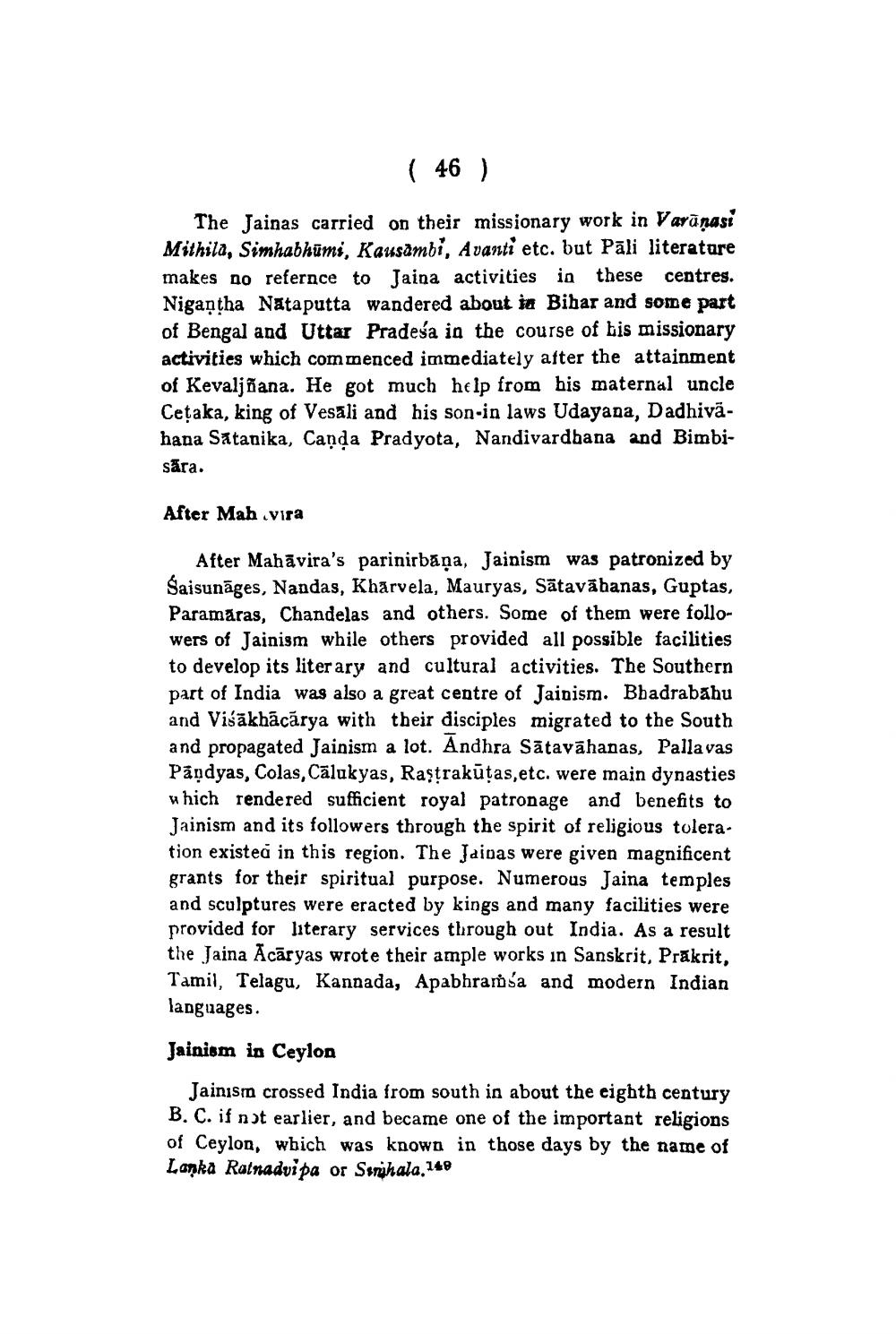________________
( 46 )
The Jainas carried on their missionary work in Varānasi Mithila, Simhabhūmi, Kausambi, Avanti etc. but Pāli literature makes no refernce to Jaina activities in these centres. Nigantha Nataputta wandered about iu Bihar and some part of Bengal and Uttar Pradesa in the course of his missionary activities which commenced immediately after the attainment of Kevaljñana. He got much help from his maternal uncle Cetaka, king of Vesali and his son-in laws Udayana, Dadhivähana Satanika, Canda Pradyota, Nandivardhana and Bimbisāra.
After Mah vira
After Mahāvira's parinirbāņa, Jainism was patronized by Saisunāges, Nandas, Khārvela, Mauryas, Sātavābanas, Guptas, Paramāras, Chandelas and others. Some of them were followers of Jainism while others provided all possible facilities to develop its literary and cultural activities. The Southern part of India was also a great centre of Jainism. Bhadrabahu and Visakhācārya with their disciples migrated to the South and propagated Jainism a lot. Andhra Sātavāhanas, Pallavas Pāņdyas, Colas, Cālukyas, Raşțrakūtas,etc. were main dynasties which rendered sufficient royal patronage and benefits to Jainism and its followers through the spirit of religious toleration existea in this region. The Jaipas were given magnificent grants for their spiritual purpose. Numerous Jaina temples and sculptures were eracted by kings and many facilities were provided for literary services through out India. As a result the Jaina Acāryas wrote their ample works in Sanskrit, Prakrit, Tamil, Telagu, Kannada, Apabhrama and modern Indian languages.
Jainism in Ceylon
Jainism crossed India from south in about the eighth century B. C. if not earlier, and became one of the important religions of Ceylon, which was known in those days by the name of Lanka Ratnadvi pa or Serihala.148




